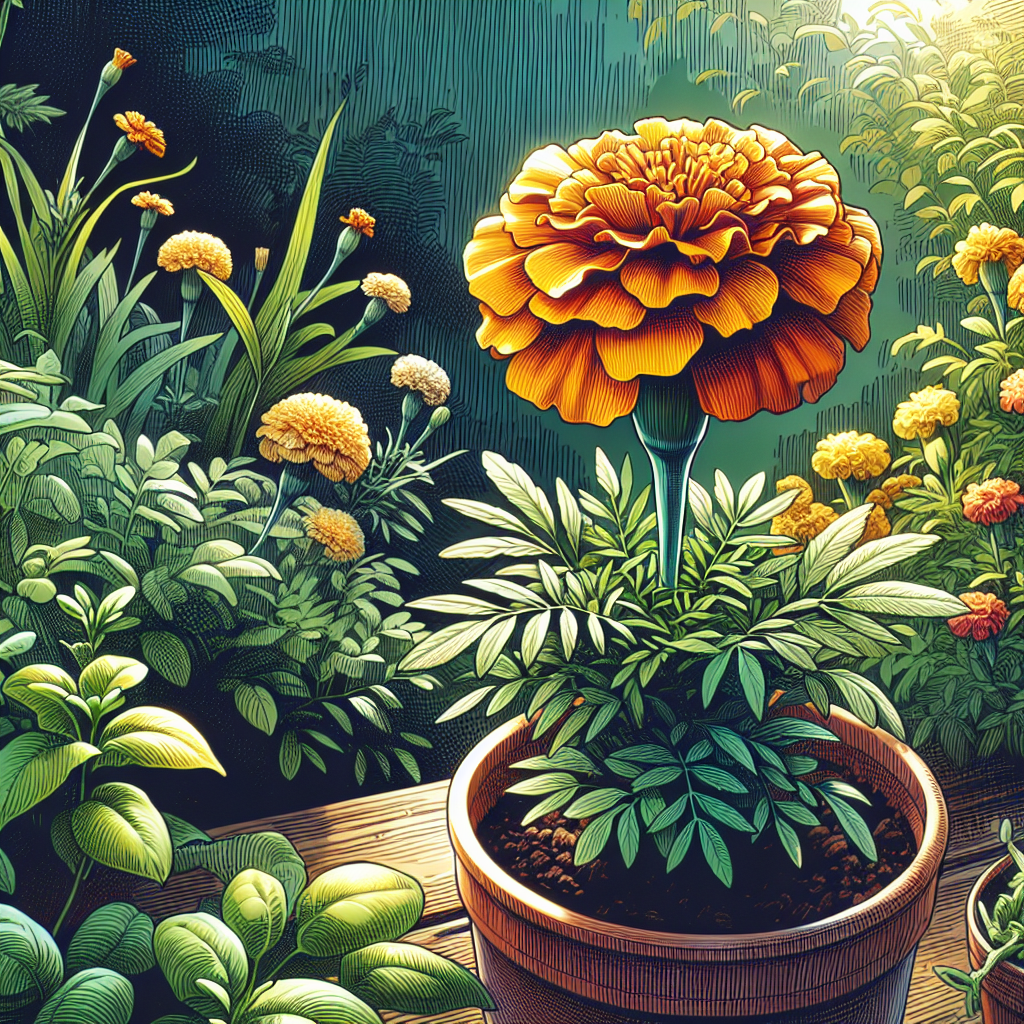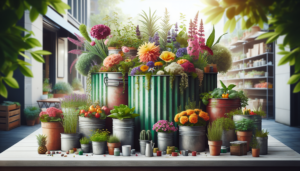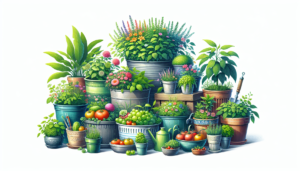
Hey gardening enthusiast! Looking to make the most out of your container garden this June? Look no further! In this article, we will be sharing some fantastic tips to help you create a thriving container garden this season. From choosing the right plants to providing them with the ideal environment, we’ve got you covered. So roll up those sleeves, grab your gardening tools, and get ready to elevate your container garden to new heights of beauty and productivity!
Choosing the Right Containers
When it comes to choosing containers for your garden, there are a few important factors to consider. The size of the containers is important because it determines how much growing space your plants will have. You want to make sure that the containers you choose are large enough to accommodate the root systems of your plants. Additionally, the material of the containers is another factor to consider. Plastic containers are lightweight and affordable, while clay pots provide good drainage. Ultimately, the choice of containers depends on your personal preferences and the needs of your plants.
Ensure Proper Drainage
Proper drainage is essential for the health of your container garden. Without adequate drainage, the roots of your plants can become waterlogged, leading to rot and other problems. To ensure proper drainage, it’s important to have holes in the bottom of your containers for excess water to escape. You can also add a layer of gravel or broken pottery at the bottom of your containers to create space for water to flow freely. This will help prevent water from sitting in the bottom of the container and causing damage to the roots of your plants.
Selecting the Right Plants
Choosing the right plants for your container garden is crucial for their success. One important consideration is the climate in which you live. Different plants have different temperature and sun exposure requirements, so it’s important to choose plants that are suitable for your particular climate. Additionally, it’s important to consider the amount of sunlight your garden receives. Some plants thrive in full sun, while others prefer partial shade. By taking these factors into account, you can ensure that your plants have the best possible chance of thriving in your container garden.
Choose Plants That Thrive in June
June is a great time to start a container garden because many plants are in their prime during this month. Some popular options for June container gardens include annual flowers like petunias, marigolds, and impatiens. Vegetables like tomatoes, cucumbers, and peppers also do well in containers during June. Herbs such as basil, rosemary, and mint are great additions to a June container garden as well. By selecting plants that are known to thrive in June, you increase your chances of having a successful and beautiful container garden.
Mix Different Types of Plants for Visual Appeal
To create visual interest in your container garden, consider mixing different types of plants together. Combining plants with different heights, textures, and colors can create a stunning display. For example, you can combine tall, upright plants with trailing or cascading plants to add dimension to your containers. Additionally, mixing plants with different bloom times can ensure that you have a continuous display of flowers throughout the season. Don’t be afraid to experiment and get creative with the plants you choose for your container garden.
Preparing the Containers
Before planting your container garden, it’s important to properly prepare the containers to create a conducive environment for your plants. Start by cleaning the containers to remove any dirt or debris from previous plantings. This will help prevent the spread of diseases or pests. Next, add a layer of gravel or broken pottery at the bottom of your containers. This helps improve drainage by preventing the soil from blocking the drainage holes. Finally, fill your containers with quality potting soil. Good quality potting soil is essential for providing the necessary nutrients and aeration for your plants.
Watering and Fertilizing
Proper watering and fertilizing are key factors in maintaining a healthy container garden. Container plants typically require more frequent watering compared to plants in the ground. It’s important to water your plants regularly and deeply, ensuring that the soil is evenly moist. However, be cautious not to overwater as this can lead to root rot. Using mulch can help retain moisture in the soil and reduce the frequency of watering. In addition to watering, fertilizing your container plants is important to provide them with the necessary nutrients. Different plants have different fertilizing needs, so it’s important to follow the instructions specific to each plant.
Pruning and Deadheading
To keep your container garden looking its best, it’s important to prune and deadhead your plants regularly. Pruning involves cutting back the branches or stems of your plants to maintain their shape and size. This helps to encourage healthy growth and prevent overcrowding. Deadheading, on the other hand, involves removing spent flowers from your plants. This not only helps maintain the appearance of your garden but also encourages the plants to produce more blooms. Additionally, it’s important to remove any yellow or diseased leaves as they can indicate a problem that needs to be addressed.
Pest and Disease Control
Pests and diseases can pose a threat to the health of your container garden if left unchecked. Regularly inspecting your plants for signs of pests is crucial to catch any problems early on. If you do notice pests, there are many organic pest control methods available that are safe for both your plants and the environment. These can include using insecticidal soaps, introducing beneficial insects, or using physical barriers to keep pests away. In addition to pests, diseases can also be a concern. Treating diseases promptly can help prevent them from spreading and causing further damage to your plants.
Managing Weeds
Keeping weeds at bay is essential to maintain the health and appearance of your container garden. One effective method of weed control is to use mulch. Mulch helps to suppress weed growth by blocking sunlight and preventing weed seeds from germinating. It also helps retain moisture in the soil, reducing the need for frequent watering. If you do notice weeds in your containers, it’s best to pull them out by hand, ensuring that you remove the entire root system. Avoid using chemical weed killers in your container garden as they can potentially harm your plants and the environment.
Staking and Support
In a container garden, it’s important to provide support for tall or vining plants to prevent them from toppling over or becoming damaged. Stakes, trellises, or cages can be used to provide the necessary support. For plants that naturally grow upwards, such as tomatoes or peppers, stakes can help keep them upright. Trellises or cages work well for vining plants like cucumbers or morning glories, providing a structure for them to climb and grow on. Training your plants to grow up supports not only helps to prevent damage but also maximizes the use of space in your container garden.
Monitoring and Adjusting
Regularly monitoring the growth and health of your container plants is essential to catch any problems early on. Keep an eye out for any signs of wilting, yellowing leaves, or pests. Adjust your watering and fertilizing practices as needed based on the specific needs of your plants. It’s also important to pay attention to changes in sunlight and temperature, as these can affect the well-being of your plants. By staying vigilant and making adjustments as necessary, you can ensure that your container garden continues to thrive throughout the season.
Harvesting and Enjoying
One of the joys of container gardening is being able to harvest and enjoy the fruits (quite literally) of your labor. Harvesting your fruits, vegetables, and herbs at peak ripeness ensures that they are at their most flavorful and nutritious. Use freshly harvested produce in your culinary creations to enhance the taste and quality of your meals. Nothing beats the satisfaction of enjoying a salad with homegrown tomatoes or adding fresh herbs to your favorite recipes. Remember to take time to relax and enjoy the beauty of your container garden as well, as it is a reflection of your hard work and dedication.







